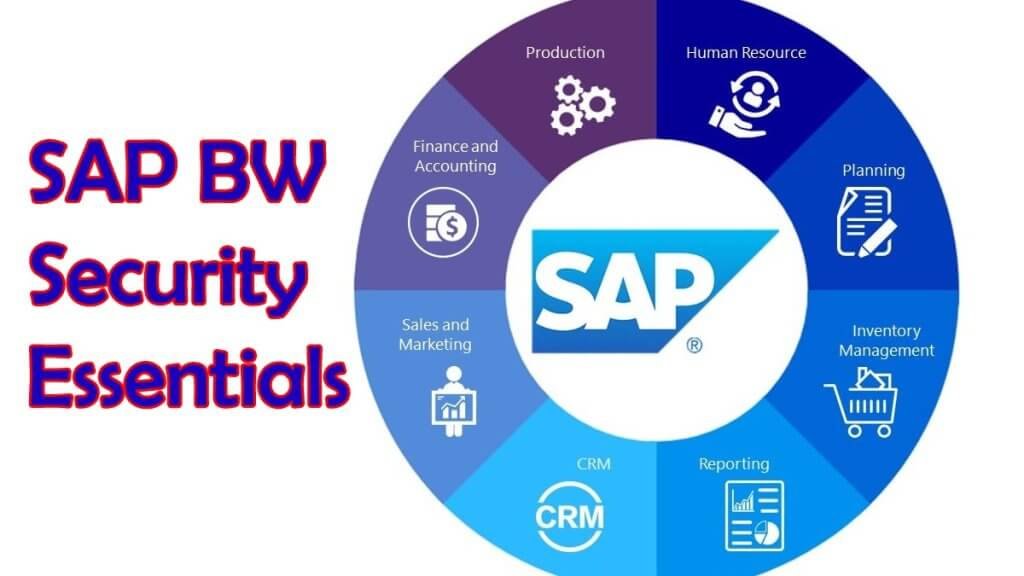SAP BW is a business intelligence tool that collects data from multiple software systems and stores it in a single Datawarehouse. It uses SAP cyber security to safeguard the information transmitted between server and client by authenticating both partners.
Table of Contents
Understanding SAP BW is essential for success. Roles, profiles, and authorizations guarantee users access only the information and features pertinent to their job. With this system in place, productivity and efficiency are sure to soar!

Access Control
As organizations become more data-driven, ensuring security compliance has become increasingly challenging. New unprotected SAP applications provisioned in cloud environments are discovered and compromised in less than three hours.
This is why it is so important to have good internal processes and procedures in place to protect your business information. This means ensuring that your SAP systems are set up correctly, following basic security practices, such as restricting access to the system after multiple failed password attempts or requiring longer passwords and complex character combinations.
Additionally, you need to ensure your teams know what they can do to prevent a security breach. This includes ensuring users are assigned the appropriate roles based on their job functions and responsibilities. It’s also important to audit and review these roles regularly and ensure they are up-to-date with the latest security settings. This way, you can avoid unauthorized access to critical business information. Also, consider implementing SSL to protect your communications between the server and client. This will help to keep your sensitive data secure and prevent malicious activity from compromising your SAP BW systems.
Analysis Authorization
Connecting to multiple operating systems is common when slicing and dicing data in SAP BW. These connections have to be secured with the help of an analysis authorization tool. This tool allows you to track, analyze and audit these connections. It also helps you ensure segregation of duties (SoD) is implemented as regulations and compliance policies require.
It keeps a record of who accessed what functionality in the SAP system. This information is important to help protect your organization against unauthorized transaction access and reduce processing errors, fraud risk, and losses.
It is a standard tool shipped with the SAP software, and it provides a more robust solution than reporting authorization objects (Z or Y-class object) because it does not have any limitations on how many authorization fields can be configured per report instance. It also makes it easy to maintain and upgrade security configurations. As such, it is a must-have for companies looking to comply with SoD and other regulatory compliance requirements. It also helps identify and reduce unauthorized or suspicious activity by recognizing patterns in your business’s operations.
Encryption
The passwords used in SAP are saved in an encrypted format. This is accomplished using a hashing algorithm, ensuring no one can retrieve the original password. However, the hashing algorithm has been changed several times over the years. These changes were provoked by weaknesses revealed in former algorithms and because hackers have become more sophisticated.
You can use encryption techniques such as SSL (Secure Socket Layer) to safeguard your SAP data. This technique allows a server and client to establish an encrypted connection by selecting the encryption variables. This will safeguard all data sent between the server and the client, preventing tampering.
This is important to your company’s SAP security because it prevents sensitive information from falling into the wrong hands. It will also help mitigate any risk from an accidental or intentional attack. In addition, implementing security patches in time will limit the vulnerability of your SAP system.
SSL
SAP BW gathers, transforms, and consolidates data from all areas of your enterprise. This data includes confidential information critical to your business operations, such as employee information. It also may contain sensitive customer information or intellectual property. This information is used for reporting, analysis, and decision-making, so secure access is essential.
An attacker with a high level of knowledge about your business applications can leverage vulnerabilities to compromise SAP systems’ integrity, availability, or confidentiality. This results from the rapid pace at which attackers discover and exploit new business-critical applications such as SAP.
To protect data, you must ensure that all communication between presentation and application servers is encrypted. This can be achieved by using SSL (Secure Sockets Layer). SAP supports a variety of SSL tools, but you will need to configure them and implement them in the right way.
Single Sign-On
While SAP security is viewed mainly from a productivity perspective, securing the data layer is also important. Using security tools such as single sign-on can help protect your data from threats at the application level.
Single sign-on enables a single set of credentials to access multiple SAP systems. This reduces the administrative cost of maintaining a separate set of credentials for each system and improves user productivity by eliminating the need to remember a series of passwords or to change them frequently. It also enhances security by safeguarding all information transmitted between the server and client, as any tampering will be detected. Organizations must take a holistic approach to identity management to minimize the risk of security breaches at the SAP application layer. With the right mix of technology, you can ensure that all users can access only the data they are authorized to see while protecting your organization’s sensitive data from cyberattacks. You can learn more about achieving this by registering for our webinar.


